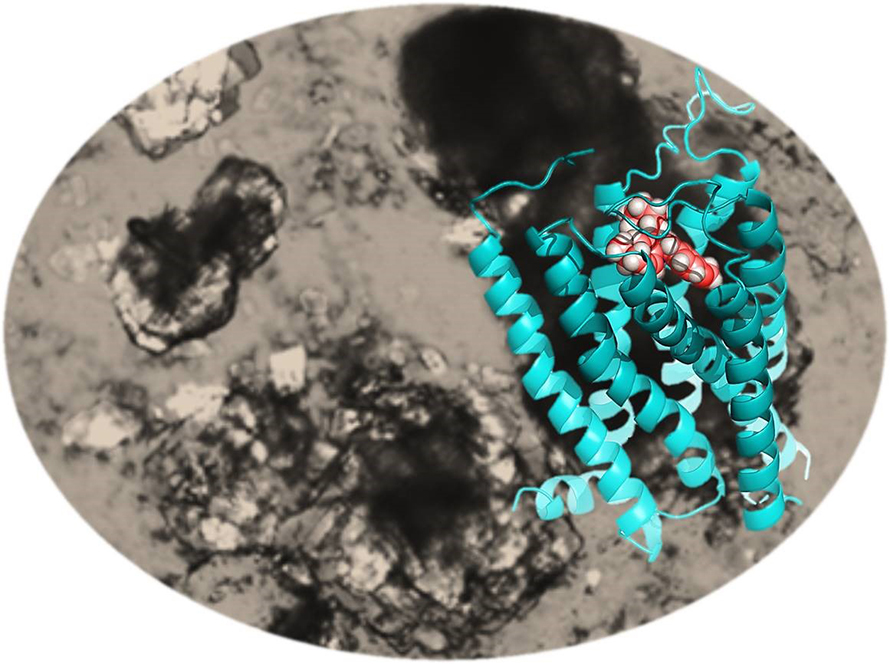Estrogen receptor antagonist shows promise for treatment of gallstone disease
Women are twice as likely as men to suffer from gallstone disease, due to estrogen’s role in triggering cholesterol gallstone formation. While small gallstones are common, in some people cholesterol forms crystals that build up and become too large for the gallbladder to expel. The resulting gallstone disease causes excruciating pain and sometimes sepsis. The standard treatment is surgical removal of the entire organ.
Christopher Arnatt, a researcher in the department of chemistry at St. Louis University, has been working to address the role of estrogen in gallstone disease. “Having a preventative cure out there for all at-risk people would be amazing,” he said.
Arnatt’s lab collaborated with David Q.H. Wang’s lab at the Marion Bessin Liver Research Center at the Albert Einstein College of Medicine in New York on a recent paper published in the Journal of Lipid Research.
Arnatt’s lab, which specializes in synthesizing compounds that target G protein–coupled receptors, created an array of drugs and tested their affinity for the G protein–coupled estrogen receptor, or GPER, which previously had been associated with gallstone formation.
“It took almost four years to nail down how to test for whether these compounds were binding to and antagonizing the G–coupled estrogen receptor,” Arnatt said. “No one had done any true medical chemistry on this, and now we have over one hundred compounds that bind to this receptor that can be used to study it further.”
Arnatt’s team showed that one of those compounds, 2-cyclohexyl-4-isopropyl-N-(4-methoxybenzyl)aniline — referred to as CIMBA — was selective for GPER, making it a strong candidate for further testing.
The second phase of the project put CIMBA to the test in mice. Wang’s lab, one of very few labs in the world that research gallstones, put ovariectomized female mice on a high-cholesterol diet and gave them doses of estradiol to induce gallstone formation. After eight weeks, the mice were injected with various doses of CIMBA, and then researchers removed their gallbladders.
These gallbladders, each about the size of a grain of rice, had to be cut open under a microscope to count and analyze their gallstones. Wang’s lab found that treatment with CIMBA reduced the formation of estrogen-induced gallstones in some mice and also found a dosage at which no gallstones formed. While the mouse model results are promising, making this compound available for human use would require safety testing and clinical trials.
Arnatt is optimistic about the potential of CIMBA and the other GPER antagonists. “These new compounds will provide researchers with a lot of new tools,” he said. “Having new drugs out there will expand people’s ability to test this receptor and its pharmacology.”
Arnatt plans to investigate how to make CIMBA more bioavailable and less toxic for gallstone prevention treatment, and he hopes to use these GPER-binding compounds to understand better the receptor’s role in the body.

Enjoy reading ASBMB Today?
Become a member to receive the print edition four times a year and the digital edition monthly.
Learn moreGet the latest from ASBMB Today
Enter your email address, and we’ll send you a weekly email with recent articles, interviews and more.
Latest in Science
Science highlights or most popular articles

Bacteriophage protein could make queso fresco safer
Researchers characterized the structure and function of PlyP100, a bacteriophage protein that shows promise as a food-safe antimicrobial for preventing Listeria monocytogenes growth in fresh cheeses.

Building the blueprint to block HIV
Wesley Sundquist will present his work on the HIV capsid and revolutionary drug, Lenacapavir, at the ASBMB Annual Meeting, March 7–10, in Maryland.

Gut microbes hijack cancer pathway in high-fat diets
Researchers at the Feinstein Institutes for Medical Research found that a high-fat diet increases ammonia-producing bacteria in the gut microbiome of mice, which in turn disrupts TGF-β signaling and promotes colorectal cancer.

Mapping fentanyl’s cellular footprint
Using a new imaging method, researchers at State University of New York at Buffalo traced fentanyl’s effects inside brain immune cells, revealing how the drug alters lipid droplets, pointing to new paths for addiction diagnostics.

Designing life’s building blocks with AI
Tanja Kortemme, a professor at the University of California, San Francisco, will discuss her research using computational biology to engineer proteins at the 2026 ASBMB Annual Meeting.

Cholesterol as a novel biomarker for Fragile X syndrome
Researchers in Quebec identified lower levels of a brain cholesterol metabolite, 24-hydroxycholesterol, in patients with fragile X syndrome, a finding that could provide a simple blood-based biomarker for understanding and managing the condition.

